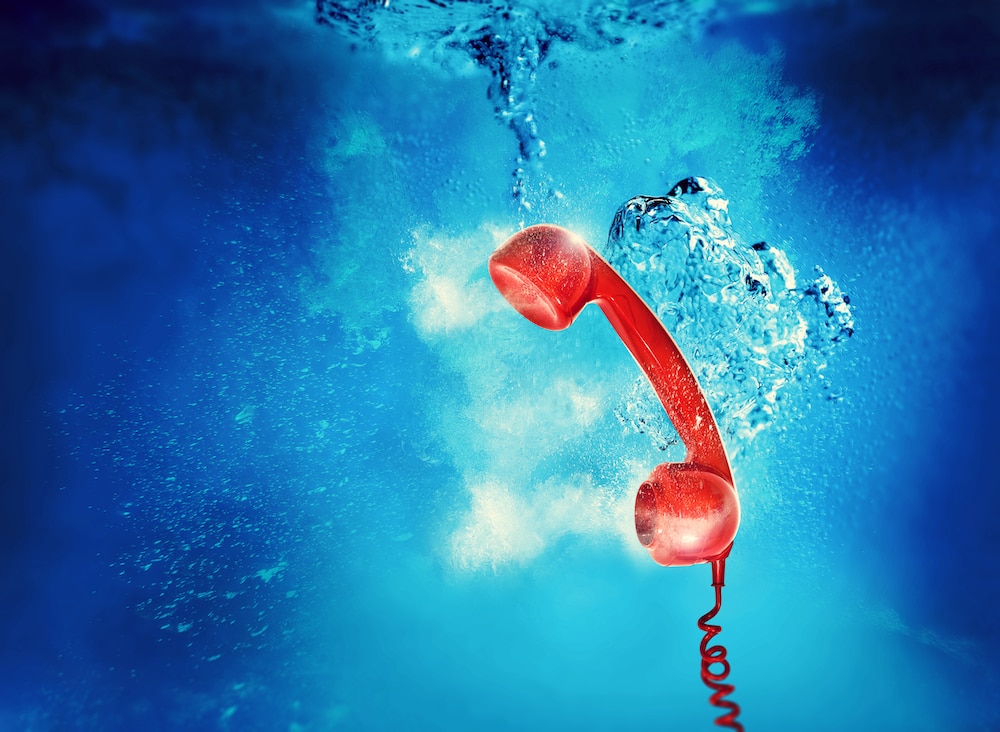Create a free profile to get unlimited access to exclusive videos, sweepstakes, and more!
From Sun to sea! Underwater wireless communication effectively utilizes solar cells
Brought to you by Sea-Mobile.

Solar cells have become a common part of our everyday lives, from massive energy farms to common devices like exterior lights and portable phone chargers. Now, they’re going somewhere we never expected solar cells to work, under the ocean.
If you’re a person or a machine working and collecting data underwater, maintaining clear lines of communication with the surface is pretty high on your list of necessities. Divers, crewed submarines, and autonomous robots working in the world’s oceans collect all kinds of useful information about underwater activities including the migration of animal populations and changing environmental conditions.
Getting that information back to the surface where scientists can make use of it has proven challenging. Often, satellite communications networks are needed and sometimes information can’t be transmitted until the person or craft breaches the surface, or else long communications cables tracing back to the surface are needed. Indeed, there’s a need for reliable, high-bandwidth wireless communications systems capable of operating underwater.
A recent study by scientists at Zhejiang University and The Engineering Research Center of Oceanic Sensing Technology and Equipment in China, published in the journal Optics Letters, explores the potential for solar cell arrays to act as wireless underwater communications networks.
Traditionally, information is transmitted wirelessly through the water in one of two ways. Radio waves have the benefit of larger wavelengths, but they don’t travel very well through the water. Getting through the watery medium requires higher power and exhibits prohibitively high latency. Optical communication is better in those respects but has limitations of its own.
Picking up an optical signal requires precise alignments between the sending and receiving units, something which is difficult to achieve and maintain across long distances under the ocean. As such, wireless optical networks are limited by distance, you can only reliably send a signal so far.
Scientists have looked to solar cells as a potential solution to this problem. Solar cells are designed to detect light from a comparatively large area and convert that light into electricity. However, previous attempts at using solar cells for communication have hit snags of their own, because the technology was intended for energy harvesting, not communications.
The team at Zhejiang University used a modified setup consisting of a 3 by 3 solar cell array. That array had a detection area of 3.4 centimeters squared. They placed the detector at the end of a seven-meter water tank, opposite a transmitter. The path of the signal was extended using a series of mirrors, such that the total length traveled by the signal was 35 meters.
The experiments achieved a bandwidth of 20 decibels at 63.4 megahertz, a vast improvement over previous optical systems. It’s also free of the latency problems present in non-optical communications networks and uses far less power. Moreover, the bandwidth increases with the size of the detector array. If implemented in the real world, connected solar cells could feasibly make up much larger receivers, further improving data recovery and bandwidth.
This form of wireless underwater communication has other benefits as well. Unlike other emerging technologies, solar cells are already in use all over the world. Utilizing them for this application would not require spinning up new factories or developing novel manufacturing protocols. Solar cells can be acquired from already established commercial sources.
Additionally, using the solar cells for data collection doesn’t preclude them from carrying out the job they were designed for. While the solar cells are not in the process of collecting information, they could continue to collect sunlight — although that may be limited by the amount of light present at depth — to power the system. Depending on how the system is implemented, wireless underwater communication could potentially be entirely energy neutral.
If we can figure out a way to deploy a wireless system at scale, we might finally be able to stop sharks from trying to eat the internet.


























